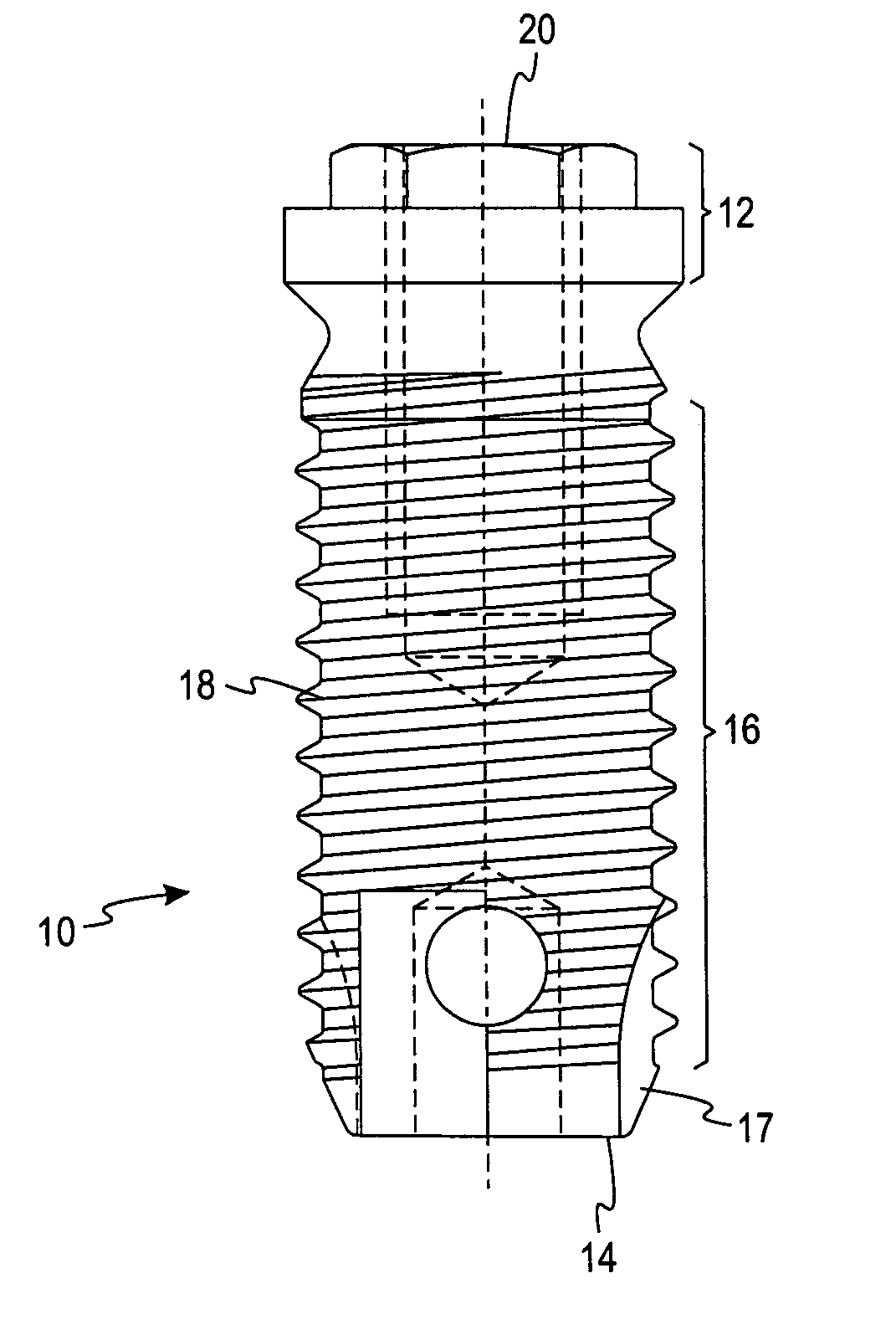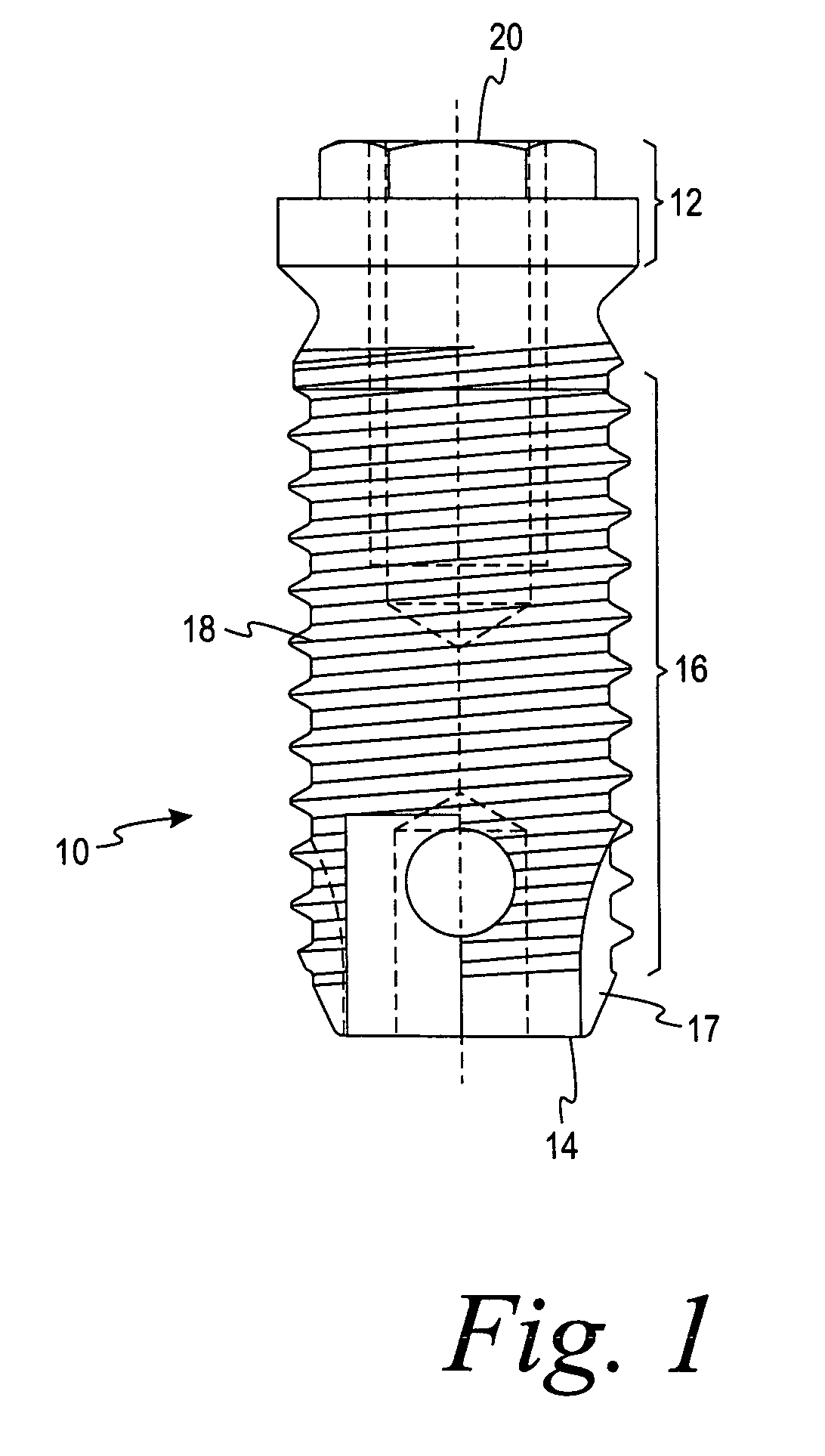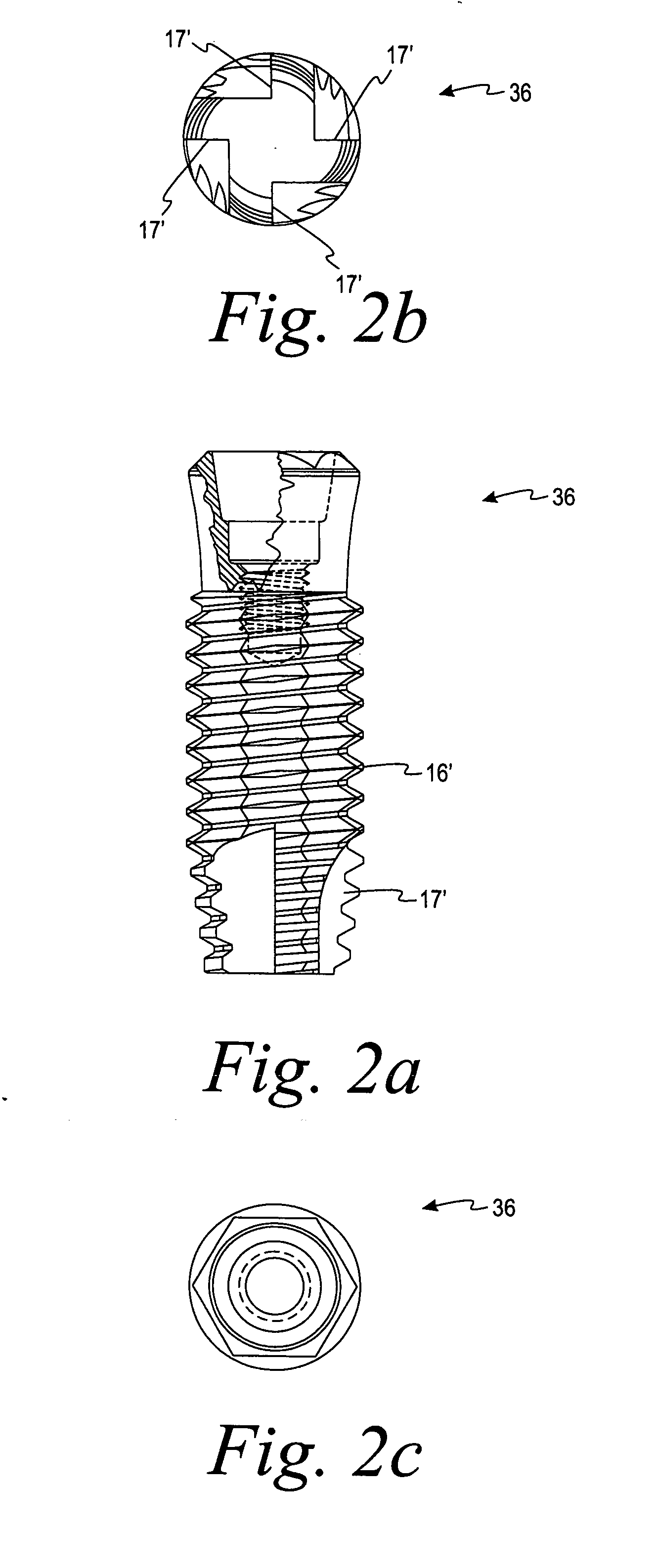Deposition of discrete nanoparticles on an implant surface
a technology of discrete nanoparticles and implants, applied in the field of implants, can solve the problems of high dissolution rate of ha in these processes, prone to fracture of the interface between ha and the implant, and hazardous disclosed process
- Summary
- Abstract
- Description
- Claims
- Application Information
AI Technical Summary
Problems solved by technology
Method used
Image
Examples
example 1
[0048]FIGS. 8a, 8b are scanning electron microscope images showing HA nanocrystals 402 after being deposited on the surface of a CP titanium implant 400. The image of FIG. 8a was taken at 10 kX utilizing an FESEM. The image of FIG. 8b was taken at 30 kX utilizing an FESEM.
[0049] The surface of the implant 400 shown in FIGS. 8a, 8b was roughened using a citric acid etching process, described in U.S. patent application Ser. No. 11 / 361,286, which has been incorporated by reference herein, to produce an Osseotite® surface. The roughening process resulted in irregularities 404 having peak-to-valley heights of no more than 10 microns. The HA nanocrystals 402 were deposited on the surface of the implant 400 using a colloidal solution. The colloidal solution included about 0.07 weight percent of HA in a 2-methoxyethanol solvent. The implant 400 was immersed in the colloidal solution for approximately 4 hours. The resulting deposition of HA nanocrystals 402 on the implant 400 are shown in F...
example 2
[0050]FIG. 9a is a scanning electron microscope image showing HA nanocrystals 502 after being deposited on the surface of an implant 500. The image of FIG. 9a was taken at 30 kX utilizing an FESEM.
[0051] The implant 500 used in FIG. 9a was comprised of titanium 6AL-4V ELI alloy. The surface of the implant 500 shown in FIG. 9a was roughened using the dual acid-etched process described in U.S. Pat. App. Pub. No. 2004 / 0265780, which has been incorporated by reference herein. The HA nanocrystals 502 were deposited on the surface of the implant 500 using a colloidal solution described above including about 0.10 weight percent of HA in a 2-methoxyethanol solvent. The implant 500 was immersed in the colloidal solution for approximately 150 minutes at ambient temperature. The resulting deposition of HA nanocrystals 502 on the implant 500 is shown in FIG. 9a.
example 3
[0052]FIG. 9b is a scanning electron microscope image showing HA nanocrystals 552 after being deposited on the surface of a titanium 6AL-4V ELI alloy implant 550. The image of FIG. 9b was taken at 30 kX utilizing an FESEM.
[0053] The procedure used for depositing the HA nanocrystals 552 on the surface of the implant 550 was generally similar to the procedure used in Example 2. However, unlike the procedure of Example 2, the pH of the colloidal solution of Example 3 was adjusted with ammonium hydroxide to 0.10 weight percent ammonium hydroxide. The pH of the adjusted solution was between 9 and 10 when measured at about 25 weight percent in deionized H2O. The implant 550 was immersed in the colloidal solution for approximately 60 minutes at ambient temperature. The resulting deposition of HA nanocrystals 552 on the implant 550 is shown in FIG. 9b.
[0054] As shown in FIG. 9b, deposition of HA nanocrystals 552 on the surface of the implant 550 is comparable to that of the implant 500 of...
PUM
| Property | Measurement | Unit |
|---|---|---|
| heights | aaaaa | aaaaa |
| temperature | aaaaa | aaaaa |
| peak-to-valley heights | aaaaa | aaaaa |
Abstract
Description
Claims
Application Information
 Login to View More
Login to View More - R&D
- Intellectual Property
- Life Sciences
- Materials
- Tech Scout
- Unparalleled Data Quality
- Higher Quality Content
- 60% Fewer Hallucinations
Browse by: Latest US Patents, China's latest patents, Technical Efficacy Thesaurus, Application Domain, Technology Topic, Popular Technical Reports.
© 2025 PatSnap. All rights reserved.Legal|Privacy policy|Modern Slavery Act Transparency Statement|Sitemap|About US| Contact US: help@patsnap.com



